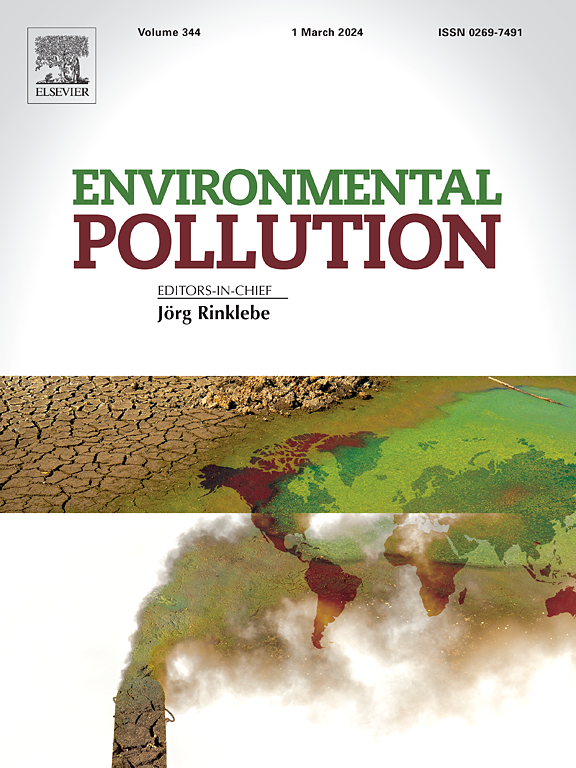Uncovering the Partitioning, Transport Flux and Socioeconomic Factors of Organophosphate Esters in an Urban Estuary of Eastern China
IF 7.6
2区 环境科学与生态学
Q1 ENVIRONMENTAL SCIENCES
引用次数: 0
Abstract
The Yangtze River Estuary is considered as a critical transition zone for terrestrial organophosphate esters (OPEs) transported to the open sea, yet their environmental behavior and influencing drivers remain inadequately investigated. Here, we examine the occurrence of eleven OPEs across water, suspended particulate matter (SPM), and sediment, which reveals moderate pollution levels compared to other Chinese estuaries. The OPE partitioning processes are dependent on compound-specific partition coefficients (LogKd), hydraulic factors, and terrestrial input. Compounds with lower logKow remain mostly dissolved or particulate-bound, whereas higher logKow OPEs tend to be deposited in sediment. Riverine input and output emerge as the dominant transport pathways for OPEs within the YRE, with an annual input flux of 677 tons. Modeling reveals that tris(1-chloro-2-propyl) phosphate (TCIPP), tris(2-chloroethyl) phosphate (TCEP), and triethyl phosphate (TEP) face significant resuspension risks, indicating their increased transport into the open sea, while tris(2-ethylhexyl) phosphate (TEHP) presents a remarkable sedimentary risk due to its high hydrophobicity. The results suggest that the YRE functions as a source for resuspension-prone compounds and a sink for sediment-bound OPEs, demonstrating their distinct environmental fates. Additionally, aggravating pollution of OPEs has been observed in the Pearl River, Yellow River, and Yangtze River Estuaries with sustained wastewater discharge and rapid urbanization. This study provides an overview of the partitioning processes, transport mechanisms, and anthropogenic threats, thus underlining the need for effective pollution mitigation to protect estuarine ecosystems and promote sustainable water management.

求助全文
约1分钟内获得全文
求助全文
来源期刊

Environmental Pollution
环境科学-环境科学
CiteScore
16.00
自引率
6.70%
发文量
2082
审稿时长
2.9 months
期刊介绍:
Environmental Pollution is an international peer-reviewed journal that publishes high-quality research papers and review articles covering all aspects of environmental pollution and its impacts on ecosystems and human health.
Subject areas include, but are not limited to:
• Sources and occurrences of pollutants that are clearly defined and measured in environmental compartments, food and food-related items, and human bodies;
• Interlinks between contaminant exposure and biological, ecological, and human health effects, including those of climate change;
• Contaminants of emerging concerns (including but not limited to antibiotic resistant microorganisms or genes, microplastics/nanoplastics, electronic wastes, light, and noise) and/or their biological, ecological, or human health effects;
• Laboratory and field studies on the remediation/mitigation of environmental pollution via new techniques and with clear links to biological, ecological, or human health effects;
• Modeling of pollution processes, patterns, or trends that is of clear environmental and/or human health interest;
• New techniques that measure and examine environmental occurrences, transport, behavior, and effects of pollutants within the environment or the laboratory, provided that they can be clearly used to address problems within regional or global environmental compartments.
 求助内容:
求助内容: 应助结果提醒方式:
应助结果提醒方式:


